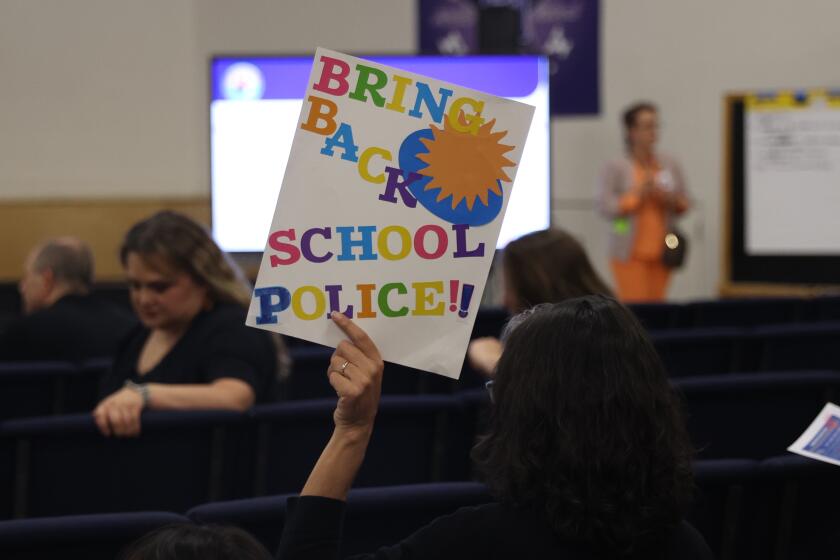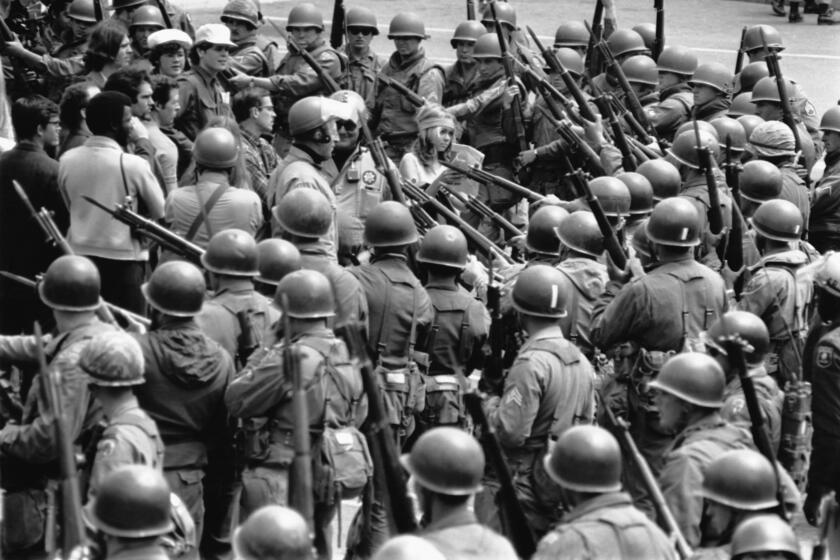EARTHQUAKE / The Long Road Back : Cal State Northridge to Hold Classes in Portable Trailers : Education: Officials say continuing aftershocks make it impossible to count on using existing buildings when school reopens.
Officials at Cal State Northridge, weary of reinspecting each of the campus’s 58 buildings for safety following aftershocks, said Thursday that they plan to use portable trailers for all classes and offices when school reopens two weeks late Feb. 14.
Provost Louanne Kennedy advised the school’s deans to prepare spring and summer semester schedules using about 190 portable classrooms, which can hold about 25 people each and can be linked together to create larger spaces.
Another 100 trailers will be used for faculty office space, with professors likely staggering office hours and sharing desks, she said. The trailers will be located on the school’s athletic fields.
“We have to plan on the basis of no building on the main campus being available,” Kennedy said. “If they come on line, then we’ll use them, but we can’t plan on that. Every time there is an aftershock, it changes the status of the buildings and then we have to start all over again.”
University officials and deans said that with creative planning and maximum use of limited space the campus would be able to accommodate an expected enrollment of 22,000 students. Usual spring enrollment is about 26,000 students, Kennedy said, but many students are not expected to return because of the Jan. 17 quake.
Other contingency plans include holding classes in meeting halls near campus, borrowing laboratory space from corporations, teaching education students at local elementary schools and shipping advanced science students off to other colleges and universities.
Other likely adaptations include scheduling more classes during off-peak times, especially Friday nights and Saturdays, Kennedy said.
“Whenever our students come, I would like to have classes for them,” Kennedy told the deans. “They may not be the ideal classes, they may be larger, they may be in the Asian church across the street . . . but they will happen.”
Student housing could also be affected by the contingency plan announced Thursday for reopening the quake-damaged campus. About 1,350 students lived in university-owned apartments before the quake, according to Housing Director Roger Frichette. Although only 23% of the available housing was declared unsafe, all students may have to find new places to live, he said.
Cal State Northridge President Blenda J. Wilson said, however, she expects dorms and library space to be ready when students return. But the school must have a contingency plan since the aftershocks continue to shake the campus.
“Right now everything is unclear,” Wilson said. “If you plan for not having anything, then everything you get is a bonus. If we sit here and try to guess, we’ll never get any planning done.”
The university, just blocks from the quake’s epicenter, suffered serious damage in the main shock; some structures were weakened further by strong aftershocks that followed.
Meanwhile, a spokesman for Santa Monica College said the 24,000-student community college sustained $26 million in damage and would have to postpone the start of spring term one week to Feb. 22.
He said school officials were scrambling to find enough portable buildings to replace classrooms lost to earthquake damage.
More to Read
Start your day right
Sign up for Essential California for news, features and recommendations from the L.A. Times and beyond in your inbox six days a week.
You may occasionally receive promotional content from the Los Angeles Times.






